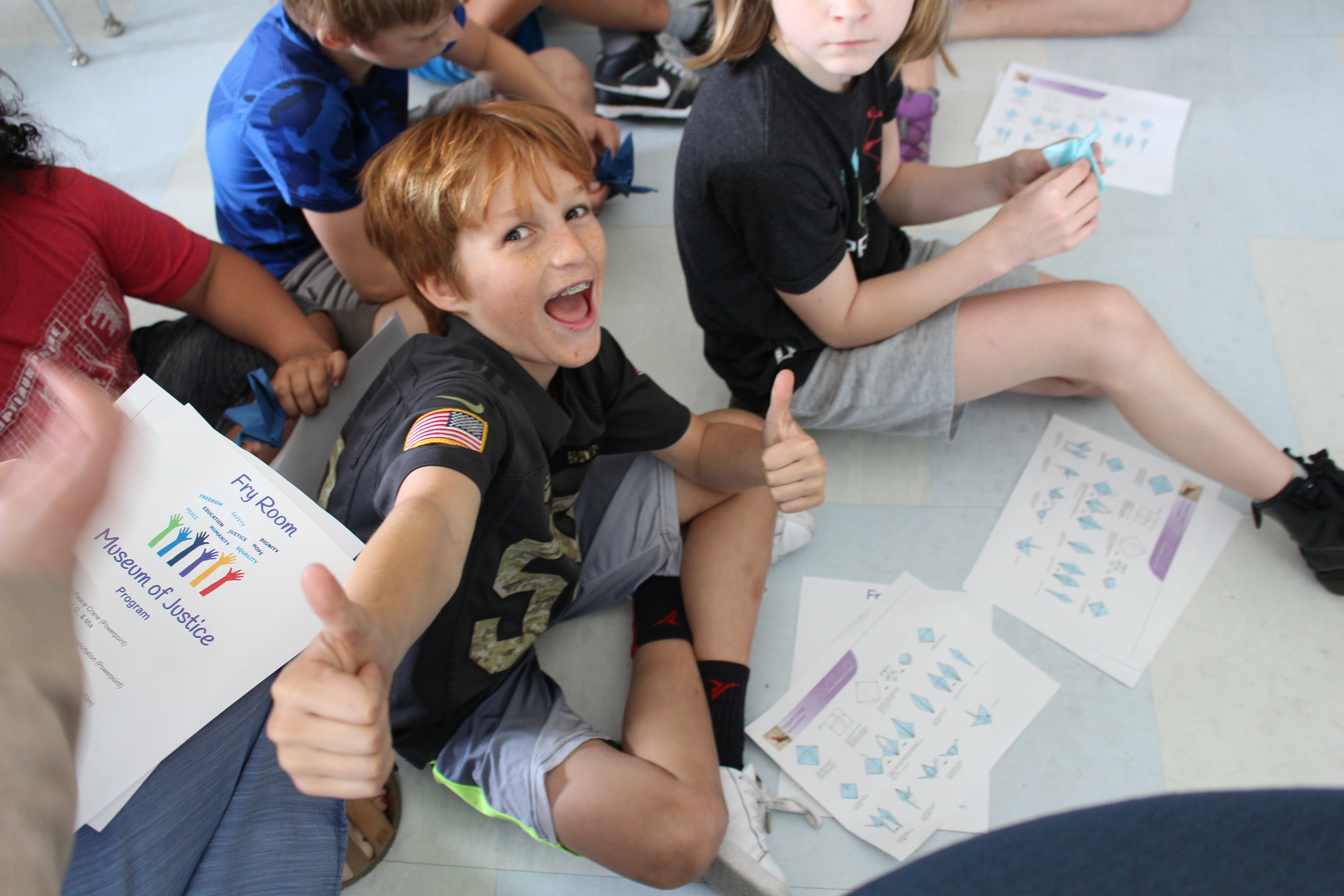
Each year around this time, if you walk around the lower school you will find students, teachers, and specialists working hard on class museums. Historically, class museums have been a reflection and demonstration of what students have been studying in their social studies classes. For example, you will find colorful palafitos in the Anderson Room, and model bridges in the Krisberg, Longobardi, and Lacey Rooms. In the Emily and Mott Rooms, you will be impressed with the beautiful longhouses the students have built. In the Cuffe, Fox, and Dunbar Rooms, you will think you have been transported to the early 1900s on Orchard Street, and in the Fell, Penn, and Levi Rooms, students are sharing powerful information about European exploration and its impact on native peoples. There has been a tremendous amount of building and filming going on!
This year, Fry Room teachers, Tara Schneider and Cara Di Ubaldi, have taken a different direction with their class’ museum, diving down to the Quaker foundation of MMFS and focusing on the theme of justice. As the mini-unit, the theme of justice has been studied throughout the year, and the Fry Room museum has been dedicated to producing four special projects related to this theme. Earlier in the year, the class visited the United Nations and studied the Declaration of Human Rights. For the class museum, one team worked on a public service announcement about free speech and marriage equality to represent one of the many human rights about which they have learned and become passionate . The class also read about the life of Ruby Bridges, so a second group focused on Ruby, her family, and how they worked together to manage the ground-breaking role she played. They made a movie about a few different stages of her life. A third group made a digital timeline about justice and NYC transportation, after the class took a trip to the New York Transit Museum, where they learned about how the NYC subway and bus system is an example of justice and equity. The system was designed to be a low cost option that would serve everyone. The subway opened doors for many women to enter the workforce, as so many men were off at war and more “man-power” was needed to support the economy. The last group focused on the class reading of Sadako and the Thousand Paper Cranes by Eleanor Coerr, based on a true story of a girl dying from the effects of the bomb in Hiroshima and her deep wish for peace in the world. As some of the paper cranes she made have been donated around the world in the name of peace, including to the 9/11 Memorial in New York, students in this group shared their voices by sending a package of origami peace cranes to our President.
When asked why studying all these things was important and what they have taken away from their year-long study of justice, two students said, “We have to learn about what happened in the past, so we do not repeat it in the future.”
By Hannah Wiltshire, Elementary Division Director